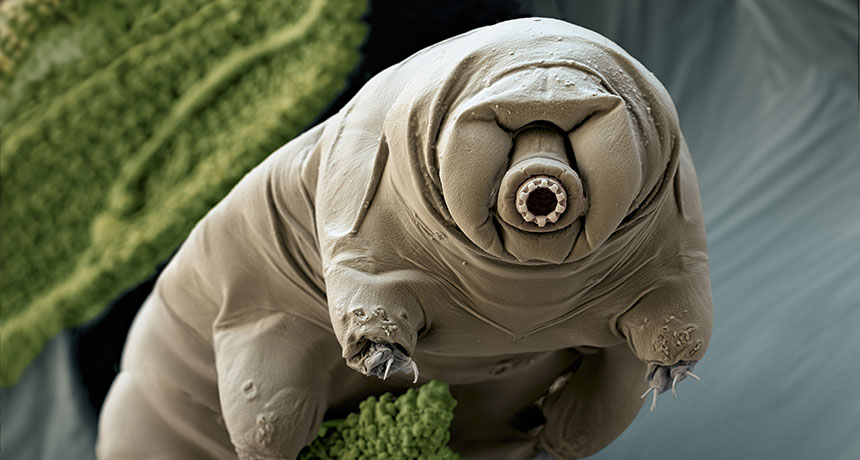Water bears’ genetic borrowing questioned
A new analysis finds bacterial DNA in the tardigrade genome is mostly contamination

WHAT’S IN A WATER BEAR? A new study may deflate claims that water bears, technically called tardigrades, incorporate many genes from other organisms into their DNA.
Eye of Science/Science Source